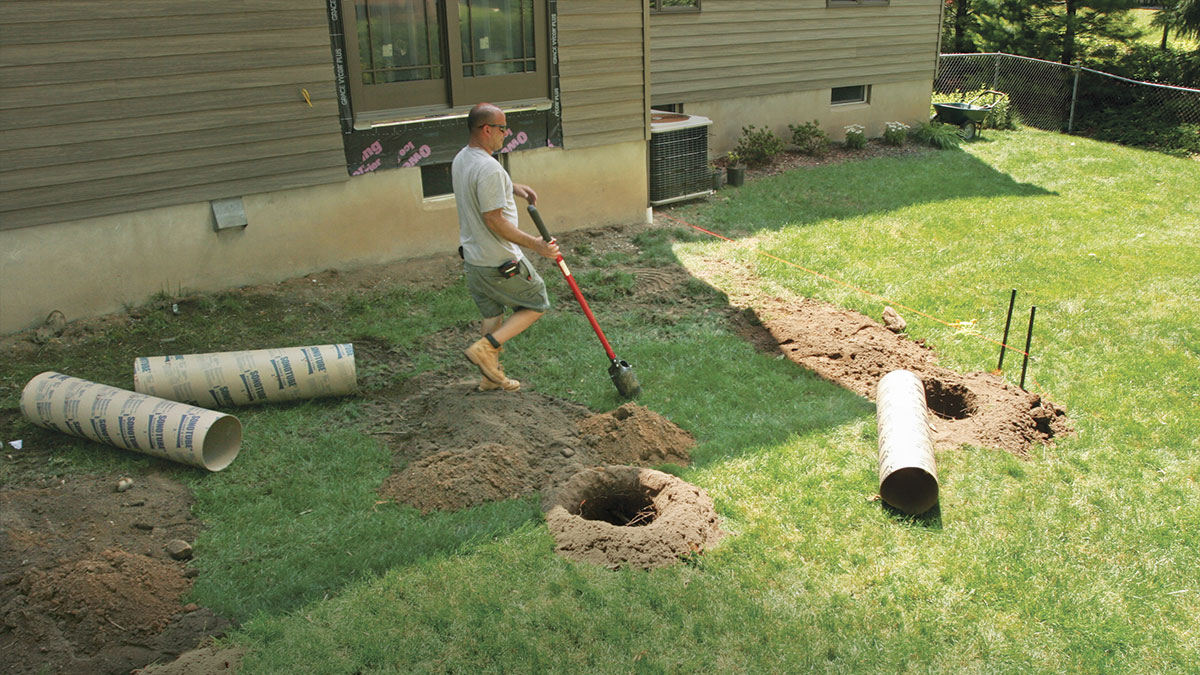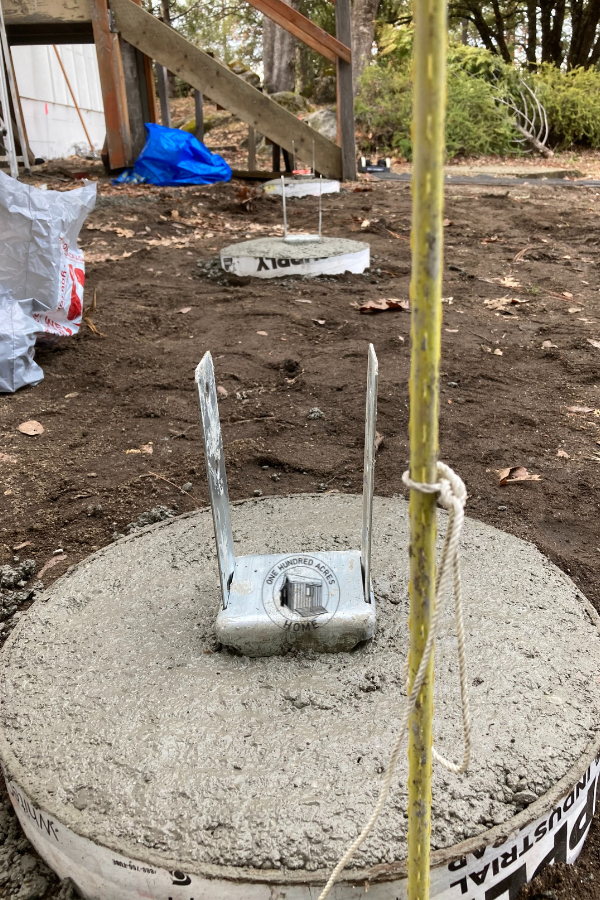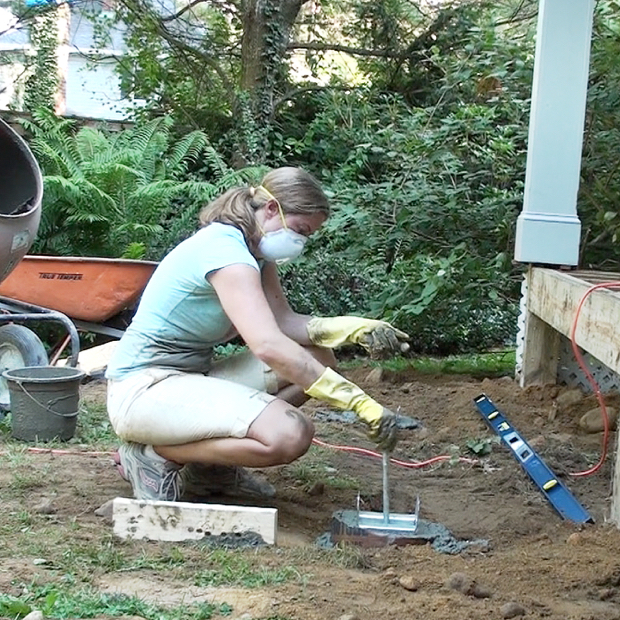From Concept to Concrete: The Important Function of Deck Footings in Sturdy and Safe Decks
Wiki Article
Expert Tips for Installing Deck Footings to Support Your Outdoor Room
When it comes to constructing a deck, one of the most critical elements to consider is the installment of appropriate grounds. These grounds are the foundation upon which your outdoor area will certainly rest, supplying security and assistance for years to come. What precisely does it take to install deck grounds properly?Value of Appropriate Deck Grounds
Appropriate deck footings are necessary for ensuring the security and long life of your outside space. When constructing a deck, it is vital to pay attention to the structure on which it will rest. Deck grounds offer the essential support for the whole framework and assistance distribute the weight equally - Deck Footings. Without solid and properly installed footings, your deck may become unpredictable, leading to safety and security hazards and expensive repair work.
Along with security, appropriate deck footings also add to the longevity of your outside area (Deck Footings). Footings that are created and created to endure the components and soil conditions in your area will help protect against the deck from moving or resolving over time. By ensuring the grounds are correctly sized and installed, you can reduce the danger of damage to the deck framework, prolonging its lifespan and lowering the requirement for costly fixings or substitutes

Selecting the Right Type of Footings
When selecting the suitable kind of footings for your deck, it is very important to think about factors such as dirt conditions, neighborhood building regulations, and the total style of your outside area. The sort of footing you select will play a critical duty in ensuring the security and durability of your deck.One common kind of footing is the concrete footing. Concrete grounds are appropriate for many dirt conditions and give excellent support for decks.
Sometimes, you may require to utilize specific grounds, such as pile grounds or deep foundations, if you are constructing a multi-level or huge deck. These footings are developed to disperse the weight of the deck over a larger location, ensuring stability and preventing working out or sinking.
Prior to picking a kind of footing, it is important to seek advice from local structure codes and guidelines to make sure conformity. Additionally, consider the style and planned usage of your outdoor area. Factors such as the dimension, form, and load-bearing needs of your deck will certainly influence the kind of footing that is most suitable.
Preparing the Ground for Footing Installment
To properly prepare the ground for footing setup, it is very important to analyze the soil problems and take necessary steps to guarantee stability and sturdiness of the deck. The very first step is to excavate the location where the grounds will be installed. The deepness of the excavation will rely on the frost line in your region and the particular needs of the deck design. It is necessary to get rid of any type of vegetation, rocks, or particles from the excavation to make certain a solid structure.When the area has actually been excavated, the next action is to compact the soil. This can be done utilizing a plate compactor or by utilizing a hand meddle. Condensing the soil aids to get rid of any voids or air pockets, which can bring about clearing up and instability gradually.
After compacting the dirt, it is essential to lay a layer of gravel or crushed stone at the end of the excavation. This will certainly give drainage and aid to stop water from pooling around the footings, which can result in erosion and instability.
Step-by-Step Overview to Putting Up Deck Footings
After appropriately preparing the ground for footing installation, the following step is to start the process of setting up deck grounds. This detailed guide will supply you with a clear understanding of how to install deck grounds for your outdoor area.Determine the area: Start by marking the positions of the deck grounds using stakes and string. Make sure that the areas line up with the style and format of your deck.
Dig the holes: Utilize a message opening miner or an auger to dig the openings for the grounds. The depth and diameter of the holes should remain in accordance with regional building ordinance and the particular needs of your deck layout.
Degree the holes: Use a level to ensure that the holes are dug to the appropriate deepness and are degree with each various other. (Deck Footings)
Add crushed rock: Place a layer of gravel at the base of each opening to boost drainage and protect against the timber from decaying.
Put the grounds: Put the grounds into the holes, ensuring they are degree and plumb. Make use of a degree and a determining tape to make certain accuracy.
Secure the footings: Put concrete into the openings around the footings, filling them to the top. Make use of a blog post degree to make certain the grounds stay degree as the concrete sets.
Permit time Recommended Site for healing: Allow the concrete remedy according to the producer's directions prior to continuing with the deck building and construction.
Common Blunders to Stay Clear Of Throughout Footing Installment
One crucial facet to think about during the installation of deck footings is preventing common blunders that can jeopardize the security and long life of your outdoor area. While deck footings may appear like a straightforward and uncomplicated component of the building and construction process, ignoring certain factors can cause expensive repair work and prospective safety dangers down the line.
Additionally, overlooking to install correct drainage steps can create water to collect around the grounds, resulting in rot, degeneration, and the eventual weakening of the deck's structure. Moreover, making use of the wrong kind of footing material or failing to effectively secure the footings can endanger their structural integrity.
To prevent these mistakes, it is important to consult with a professional or comply with industry standards to guarantee appropriate ground setup. By doing so, you can guarantee the stability and long life of your outside room, giving a risk-free and satisfying environment for years to find.
Final Thought
To conclude, mounting proper deck footings is critical for the security and long life of your outside area. By selecting the right kind of footings and adequately preparing the ground, you can make certain a strong foundation for your deck. Complying with a step-by-step overview and avoiding common errors throughout footing installation will additionally enhance the toughness and security of your deck.Appropriate deck footings are important for ensuring the stability and durability of your outside area. The footings offer as a connection in between go to my site the ground and the deck, allowing the weight of the deck and its passengers to be spread equally into the soil.One typical type of footing is the concrete footing. Insert the grounds: Place the grounds right into the holes, making sure they are degree and plumb. Safeguard the footings: Put concrete right into the holes around the footings, filling them to the top.
Report this wiki page